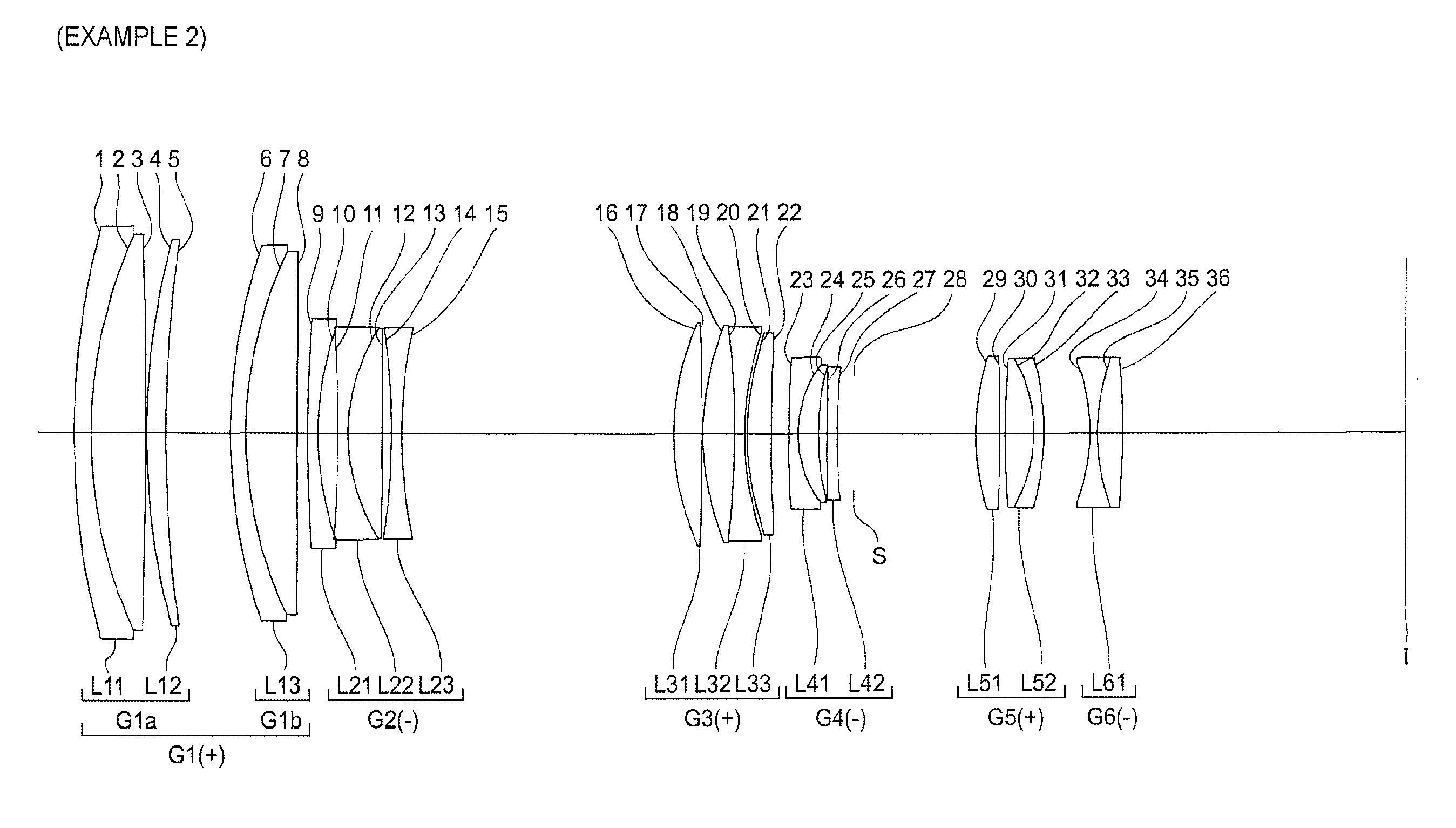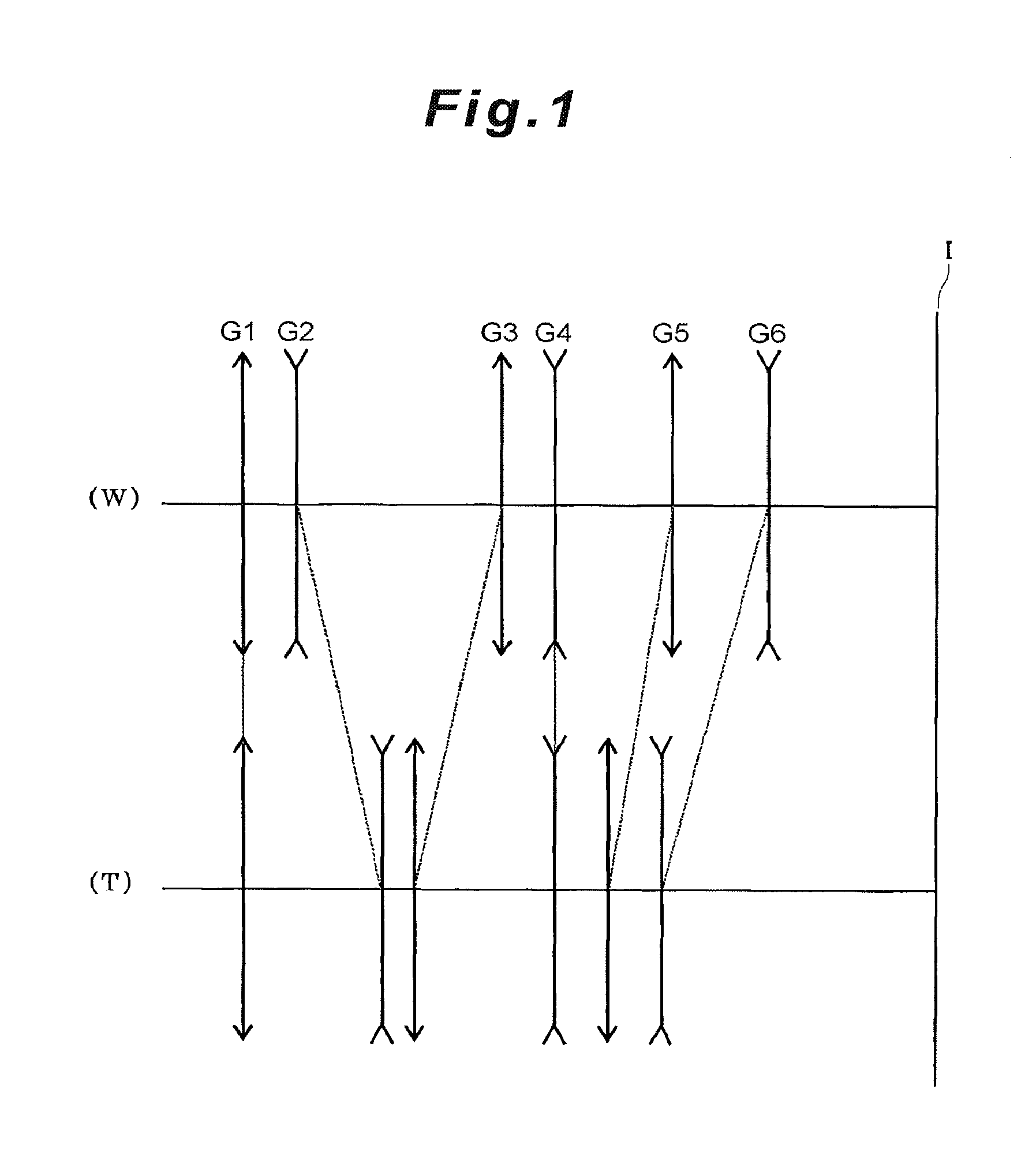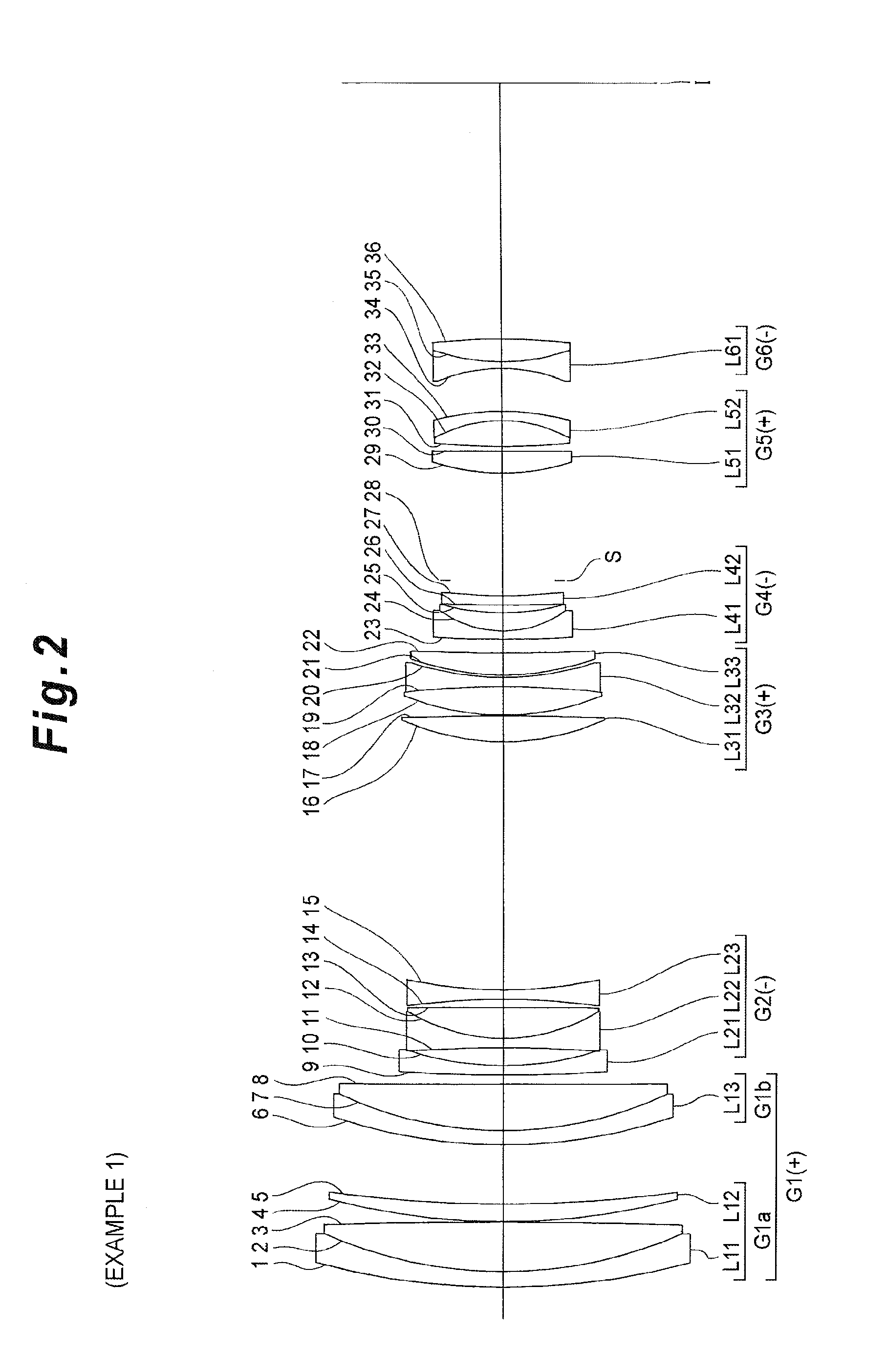Lens system, optical apparatus and manufacturing method
a technology of lens system and optical apparatus, applied in the field of lenses system, can solve the problems of affecting the overall the complexity of the focusing mechanism, and the large size of the support mechanism and the driver mechanism of the focusing lens group, and achieve the effect of simplifying the focusing mechanism and reducing the total length of the lens system
- Summary
- Abstract
- Description
- Claims
- Application Information
AI Technical Summary
Benefits of technology
Problems solved by technology
Method used
Image
Examples
first embodiment
Examples of the First Embodiment Group
[0188]Each example (Example 1 to Example 5) in the first embodiment group will now be described with reference to the drawings. FIG. 1 is a diagram depicting the allocation of refractive power in the lens system and a shifting state of each lens group upon changing of the focal length state from the wide angle end state (W) to the telephoto end state (T) according to each example. As FIG. 1 shows, the lens system according to each example has, in order from the object, a first lens group G1 having positive refractive power, a second lens group G2 having negative refractive power, a third lens group G3 having positive refractive power, a fourth lens group G4 having negative refractive power, a fifth lens group G5 having positive refractive power, and a sixth lens group G6 having negative refractive power. And upon changing of the focal length state (that is, zooming) from the wide angle end state to the telephoto end state, the first lens group G...
example 1
[0195]Example 1 will now be described with reference to FIG. 2 to FIG. 5 and Table 1 to Table 5. FIG. 2 is a diagram depicting a configuration of a lens system according to Example 1. As FIG. 2 shows, in the lens system according to Example 1, the first lens group G1 has, in order from the object, a front portion lens group G1a and a rear portion lens group G1b. The front portion lens group G1a has, in order from the object, a cemented positive lens L11 in which a negative meniscus lens having a convex surface facing the object and a biconvex lens are cemented, and a positive meniscus lens L12 having a convex surface facing the object. The rear portion lens group G1b has, in order from the object, a cemented positive lens L13 in which a negative meniscus lens having a convex surface facing the object and a positive meniscus lens having a convex surface facing the object are cemented.
[0196]The second lens group G2 has, in order from the object, a negative meniscus lens L21 having a c...
example 2
[0211]Example 2 will now be described with reference to FIG. 6 to FIG. 9 and Table 6 to Table 10. FIG. 6 is a diagram depicting a configuration of a lens system according to Example 2. As FIG. 6 shows, in the lens system according to Example 2, the first lens group G1 has, in order from the object, a front portion lens group G1a and a rear portion lens group G1b. The front portion lens group G1a has, in order from the object, a cemented positive lens L11 in which a negative meniscus lens having a convex surface facing the object and a biconvex lens are cemented, and a positive meniscus lens L12 having a convex surface facing the object. The rear portion lens group G1b has, in order from the object, a cemented positive lens L13 in which a negative meniscus lens having a convex surface facing the object and a positive meniscus lens having a convex surface facing the object are cemented.
[0212]The second lens group G2 has, in order from the object, a negative meniscus lens L21 having a ...
PUM
 Login to View More
Login to View More Abstract
Description
Claims
Application Information
 Login to View More
Login to View More - R&D
- Intellectual Property
- Life Sciences
- Materials
- Tech Scout
- Unparalleled Data Quality
- Higher Quality Content
- 60% Fewer Hallucinations
Browse by: Latest US Patents, China's latest patents, Technical Efficacy Thesaurus, Application Domain, Technology Topic, Popular Technical Reports.
© 2025 PatSnap. All rights reserved.Legal|Privacy policy|Modern Slavery Act Transparency Statement|Sitemap|About US| Contact US: help@patsnap.com



